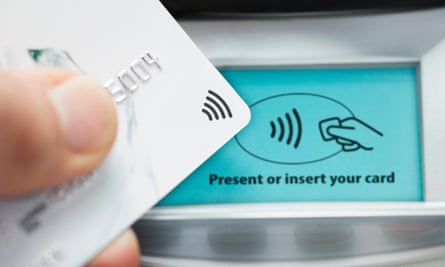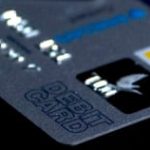It’s a financial revolution that began quietly in September 2007. That is when the first contactless bank cards were introduced in the UK, allowing people to “wave and pay” for low-value items such as a cup of coffee or a newspaper. At the time, spending was capped at £10.
Fourteen years on, with at least 135m contactless cards in circulation and the technology accounting for 9.6bn payments a year and rising, the limit is about to go up to £100. This change, which takes effect on Friday 15 October, will more than double the current £45 cap.
Not everyone is a fan of the new spending limit. Some have labelled it “a thief’s dream” because it means criminals will be able to take far more of your money in each transaction if your card is lost or stolen. Meanwhile, there are fears the new limit will make it too easy for people to lose track of what they are spending, letting them rack up big bills without much thought.
Will I be able to make use of the new £100 limit from day one?
Strictly speaking, 15 October is the start of the national rollout. Most, if not all, banks will be ready but – given the number of payment terminals that need to be updated – it may be some time before every shop accepts the higher payments.
Ensure your transaction has completed successfully before leaving the checkoutBritish Retail Consortium
The British Retail Consortium has said that not all retailers plan to implement the new limit, and that for those that do, “the change could take days, weeks or months before it’s available in stores”. The Co-op’s food stores told us they were reviewing if or when to implement the change.
The BRC said customers should be aware that different businesses may have different limits in place or be at a different stage in the process. It added: “Please ensure your transaction has completed successfully before leaving the checkout.” This is a reference to what is known in the industry as contactless walk-offs, where a customer using a self-service checkout is asked to input their pin but does not notice and inadvertently walks out of the store with goods they think they have paid for but haven’t.
What if I prefer the lower limit?
Your bank may allow you to set your own. For example, customers of Lloyds Bank, Halifax and Bank of Scotland will be able to choose a contactless limit between £30 and £95, in increments of £5. They will be able to do that via the mobile app. This will initially apply to debit cards, with credit cards – including the MBNA brand – due to follow a little later.
 View image in fullscreenShoppers in the UK will be able to spend up to £100 using contactless card payments from 15 October. Photograph: Anthony Brown/Alamy
View image in fullscreenShoppers in the UK will be able to spend up to £100 using contactless card payments from 15 October. Photograph: Anthony Brown/Alamy
Similarly, the digital bank Starling’s customers will be able to select a limit of between £0 and £100, in £10 increments, via its app.
HSBC, Barclays and Monzo told us that they do not currently offer individual limits.
Nationwide building society and Santander say they are looking at making this available in the near future.
Can I opt out of contactless completely?
Many banks – including NatWest, Lloyds, Halifax, Bank of Scotland, Santander, Nationwide and Starling – allow their customers to turn off contactless, usually via their apps.
Several big names, including HSBC, Lloyds, Halifax, Bank of Scotland, Santander and Nationwide, will let customers request a non-contactless card.
Some such as Barclays, NatWest and Monzo let people who have lost their card “freeze” it so it cannot be used by someone else.
Will I still need to use my pin every now and again?
When they hit a certain number of contactless transactions or level of spending, cardholders have to enter their pin to pay. This is to stop card thieves going on huge contactless spending sprees.
 View image in fullscreenWhen a certain number of contactless transactions or level of spending is reached, cardholders have to enter their pin to pay. Photograph: Martyn Evans/Alamy
View image in fullscreenWhen a certain number of contactless transactions or level of spending is reached, cardholders have to enter their pin to pay. Photograph: Martyn Evans/Alamy
Under the official Financial Conduct Authority (FCA) rules, it is either a maximum of five consecutive transactions or a maximum “cumulative” threshold of £130 over multiple purchases. The FCA disclosed a few months ago that the financial industry has generally opted to apply a cumulative spending cap rather than one involving consecutive purchases, and one bank told us: “It is all done on the cumulative limit.”
On 15 October the maximum cumulative threshold is more than doubling to £300, which might alarm some.
However, the important thing is that individual banks and card companies can, and do, set their own limits within the maximums. They do not usually advertise what these are for security reasons but they may be well below the FCA limits. Monzo currently has a cumulative spending cap of £100, and adds: “Discussions are currently ongoing as to the possibility of changing this threshold.”
Is contactless card fraud a big deal?
One financial institution told Guardian Money this week that when it speaks to customers “that is something people really worry about”. For example, there is the fear that a thief could run up a big bill with your card or that a criminal could brush up against you and use a hi-tech device to steal your card details while your plastic is in your pocket.
However, banks say criminals tend to be more interested in scams involving bigger sums of money, and the latest banking industry figures bear that out. During the first six months of this year, contactless fraud – covering cards and mobile phones – totalled £7.6m, according to the banking body UK Finance.
The total amount spent contactlessly during the first six months of this year was £66.5bn – so 1p in every £100 spent was fraudulent, which is “a tiny proportion” of overall transactions, it adds.
At £355m, the sum lost to bank transfer scams (AKA authorised push payment fraud) during the first six months of this year was 47 times higher than that lost to contactless fraud.
You are fully protected against fraud, so you get all of your money back and will never be left out of pocketUK Finance
The fact that a contactless card can be quickly blocked in the event of loss or theft limits the potential financial damage, as does the fact that if you are already close to your transaction limit when your card is stolen, the thief might only be able to use it once or twice before they are required to enter the pin.
That said, the pandemic reduced the opportunities for crooks, and the higher limit will make this type of crime more appealing.
UK Finance says people should not worry. “You are fully protected against fraud, so you get all of your money back and will never be left out of pocket,” it says. “If you notice any suspicious activity on your account, contact your bank immediately.” It is not clear what proportion of cases are contested by the banks, although it is understood the Financial Ombudsman Service, which settles disagreements between consumers and businesses that provide financial services, does not receive many complaints about contactless cards.
The FCA said earlier this year: “Contactless payments remain relatively safe compared to other payment methods” – and that there had been no notable increase in fraudulent transactions in other countries where the contactless limit was the equivalent of £100 or more.
These include Canada, Singapore and Australia, which have increased their single limits to 250 Canadian dollars (£146), 200 Singapore dollars (£108) and 200 Australian dollars (£107) respectively.
Google Pay and Apple Pay: no limit on phone payments
Users of Google Pay and Apple Pay have already been able to tap and go for larger purchasers than those who rely on contactless cards for their spending.
It is not the case everywhere – although transactions are not limited, some retailers have opted to have a cap in line with card payments. Others, however, allow bigger spends.
Apple Pay and Google Pay support most UK bank cards – you add details of your credit or debit card to the related app on your phone and then verify this with your bank, usually via a text message code or phone call.
You can then make payments with your phone anywhere the contactless symbol is displayed, including in foreign countries and on public transport.
 View image in fullscreenGoogle Pay and Apple Pay support most UK bank cards. Photograph: Dado Ruvić/Reuters
View image in fullscreenGoogle Pay and Apple Pay support most UK bank cards. Photograph: Dado Ruvić/Reuters
Google Pay and Apple Pay differ in how you use them in a shop. By default, Google Pay on an Android behaves the same as a contactless credit card: just have your phone screen on and tap on the reader to pay for goods or public transport up to the contactless limit in the UK. You must unlock your phone to pay above the limit. For greater security you can set it so all Google Pay transactions must be authenticated in this way.
Paying with an iPhone is slightly more complicated. Apple Pay requires you to open the Wallet app by double-pressing the power button and then authenticate the payment with Face or Touch ID before touching your phone to the card machine or reader. To speed up paying on public transport, you can set a credit card to be used for “Express Travel” on TfL services, First or Arriva buses.
Authenticated payments above the contactless limit in the UK with both services require the shop to support them. Among the few retailers that do are Aldi, Ikea, Waitrose and Marks & Spencer.
Both services give merchants virtual account numbers when you pay, which keeps your real card details safe. Neither will allow payments when your phone has been turned fully off and not unlocked. Requiring a pin, face or fingerprint before paying makes them more secure than a contactless credit card. Locking your phone remotely if you lose it using the device location services offered by Apple and Google blocks contactless payments.
Other mobile payment rivals include Samsung Pay, Garmin Pay and Fitbit Pay, which are available on their respective devices, but UK bank support for them is much more limited.
Samuel Gibbs



